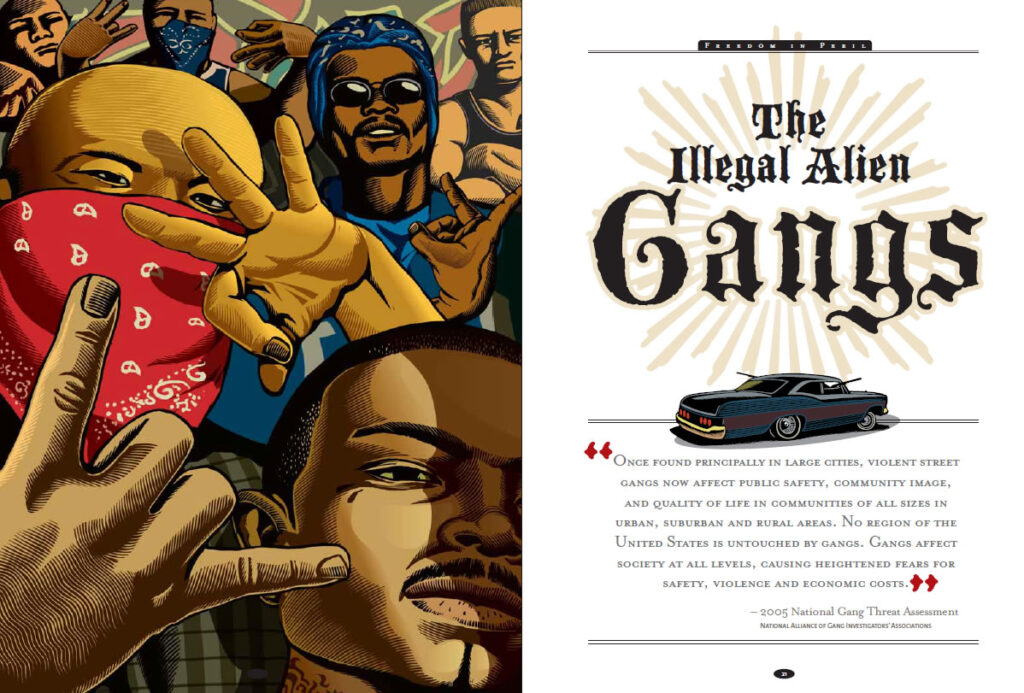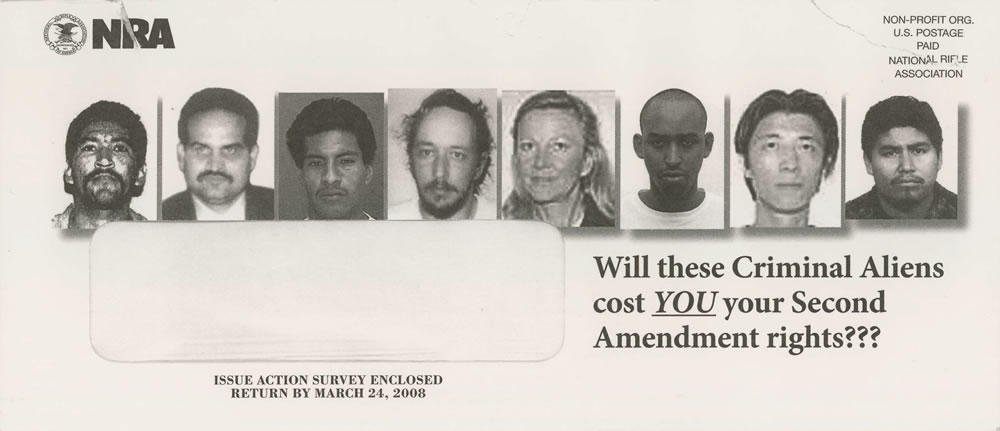Introduction
Since the mid-1960s, self-defense has been the foundational argument used by the gun industry to sell firearms, primarily handguns, in the United States. In this effort, gunmakers have been aided by the gun lobby, most notably the National Rifle Association of America (NRA). This is despite the fact that evidence consistently shows that guns are rarely used to kill criminals or stop crimes.1 Instead of protecting its owner, family, and friends, the presence of a gun in the home actually increases the risk of suicide, homicide, and unintentional death.
Historically, the primary demographic targeted by the gun industry has been white males. This is now changing as the result of the fact that this traditional customer base is aging and dying off and gunmakers, to paraphrase a tobacco industry term, have failed to recruit a sufficient number of ‘replacement shooters’ to fill their thinning ranks. As a result, household and individual gun ownership over the past few decades in the United States have declined significantly and remain relatively stagnant.2
While children3 and women have been the default targets of the industry in the wake of stagnation of the white male market, there has also been a growing focus on marketing guns, primarily for self-defense, to Latinos, Blacks, and other minority groups in America. And there is no reason to believe that the real-world impact of gun ownership on newly minted Black and Brown gun owners will be any different than their white predecessors — increased risk of death and injury in suicides, homicides, and fatal unintentional injuries. What is different is that these communities are already disproportionately impacted by lethal firearms violence and that increased gun ownership can only increase death and injury among them.
Historically, Blacks and Latinos in the United States have relatively low rates of gun ownership.4 Yet, the majority of both Blacks and Latinos, like most Americans, falsely believe “that a gun in the home is much more likely to be used to protect, rather than harm, members of the household.” One survey found that 75 percent of Blacks and 73 percent of Latinos felt that it was more likely that a gun would be “used to protect members of the home.” Only 18 percent of Blacks and 22 percent of Latinos felt that it would be more likely that the gun would be “used to harm someone in the home, either accidentally or on purpose.”5 This is despite the fact that guns, in any hands, are rarely used to kill criminals or stop crimes and that both the Black and Brown communities are disproportionately impacted by lethal gun violence.
This combination — low gun ownership coupled with a mistaken belief in the efficacy of the self-defense handgun — is the sweet spot for the gun industry and its financial partners in the NRA. And just as important as future sales are the potential political benefits outreach to minority communities may represent. Compared to whites, Blacks and Latinos show stronger support for gun violence prevention measures.6 And recognizing the continuing growth of the U.S. Latino population, the potential political benefits of increased gun ownership among this group are clear.
The brazenness of this marketing shift is striking, recognizing that for decades members of the gun lobby and firearms industry have played on fear of crime and community disorder in their marketing efforts. And while rarely stated outright, often implicit is that those to be feared come from communities of color.

Among the many threats detailed in Freedom in Peril, an unreleased 2006 NRA pamphlet that was leaked to the press, were “The Illegal Alien Gangs”7

A 2008 NRA direct mail piece asked the question “Will these Criminal Aliens cost YOU your Second Amendment rights???”
This study offers an overview of efforts by the firearms industry and gun lobby to market firearms to Blacks and Latinos in the United States. Leading this effort are the National Shooting Sports Foundation (NSSF), the trade association for the firearms industry, and the National Rifle Association (which acts as a de facto trade association for the firearms industry and has received tens millions of dollars from gunmakers).8

The discussion of the need to focus on Blacks and Latinos is not new. As far back as 1997, a column in the gun industry publication Shooting Sports Retailer, bluntly titled “Gun industry must become less racist to survive in the 21st century,” warned:
[A]ll of the usual customers the industry reaches (people of Northern European descent) who wanted a gun, now have one.
The numbers of hunters, the mainstay of the industry, is not growing. Reliance on the time-honored method of indoctrination of father-to-son in the hunting tradition can no longer be counted on with the growing urbanization of America.
It is time for a pro-active approach to include those who have not traditionally participated in the shooting sports…A major effort needs to be made to include those groups who are presently referred to as America’s racial and ethnic minorities, but who are rapidly becoming the majority. And there is tremendous potential within this largely untapped market.9
Back to Table of Contents
Next – Section One: The National Shooting Sports Foundation (NSSF) and the Firearms Industry
1 Please see Section Five: “The Myth of Self -Defense Gun Use” for additional information.
2 From 1977 to 2018, the percentage of American households that reported having any guns in the home dropped by 32 percent. During this period household gun ownership hit its peak in 1977, when more than half (50.4 percent) of American households reported having any guns. By 2018, 34.3 of American households reported having any guns in the home, a drop of 16 percentage points. From 1985 to 2018, the percentage of Americans who reported personally owning a gun dropped more than 28 percent. During this period, personal gun ownership hit its peak in 1985, when 30.5 percent of Americans reported personally owning a gun. By 2018, this number had dropped nearly nine percentage points to 21.9 percent. For more information, see The Long-Term Decline of Gun Ownership in America: 1973 to 2018, Violence Policy Center, June 2020 (http://vpc.org/studies/ownership.pdf).
3 For an in-depth overview of firearms industry and gun lobby marketing efforts focused on children and teens, see the 2016 Violence Policy Center study “Start Them Young”– How the Firearms Industry and Gun Lobby Are Targeting Your Children (http://www.vpc.org/publications/start-them-young/).
4 According to data from the General Social Survey (GSS) conducted by the National Opinion Research Center (NORC) at the University of Chicago, in both 1980 and 2018, the percentage of Blacks who reported personally owning a gun was 16 percent. During this period, personal gun ownership for Blacks ranged from a low of eight percent to a high of 23 percent. Overall, personal gun ownership by Blacks during the period surveyed has not appreciably changed. In 2000 (the first year in which Hispanic gun ownership was measured by the GSS), five percent of Hispanics reported personally owning a gun. In 2018, this percentage was reported as 12 percent. During this 19-year period for which Hispanic gun ownership was measured, the percentage fluctuated between five and 13 percent. This is due in part to the relatively small sample surveyed by the GSS. Overall, personal gun ownership by Hispanics is estimated to be approximately in the 10 percent range and has not appreciably changed during the period surveyed. For more information, see The Long-Term Decline of Gun Ownership in America: 1973 to 2018, Violence Policy Center, June 2020 (http://vpc.org/studies/ownership.pdf).
5 The Intersection of Gun Violence, Policing and Mass Incarceration in Communities of Color: Research Results,” Benenson Strategy Group, April 28, 2016 (http://www.joycefdn.org/assets/images/Memo_on_Communities_of_Color_Survey_Results_FIN.pdf).
6 For example, according to the Benenson Strategy Group survey, 87 percent of Blacks and 90 percent of Latinos strongly supported a federal measure to “Require everyone to pass a background check before buying a gun, no matter where they buy it, including online gun sales, private gun sales and sales at gun shows.”
7 “Blast From the Past: NRA Propaganda Anticipates Newtown,” Mother Jones, December 17, 2012, (https://www.motherjones.com/crime-justice/2012/12/nra-propaganda-shootings-newtown/).
8 For more information, see Blood Money II: How Gun Industry Dollars Fund the NRA, Violence Policy Center, September 2013 (https://vpc.org/studies/bloodmoney2.pdf).
9 “Gun Industry Must Become Less Racist to Survive 21st Century,” Shooting Sports Retailer, January 1997.






